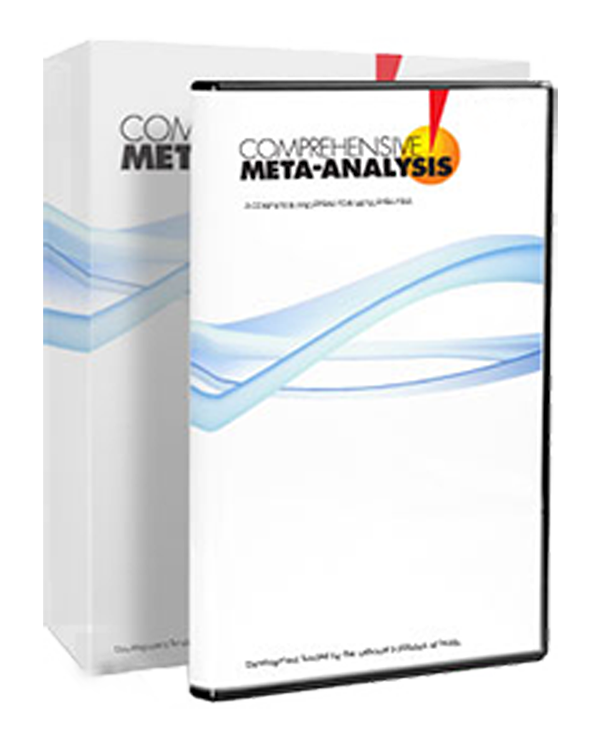Version 2 software
Important: Version 2 Users
If you own V2 and need to reinstall it on a new machine,
send us a note at [email protected] and we'll send a link to V2.
Comprehensive Meta-Analysis

Comprehensive Meta-Analysis (CMA) is a powerful computer program for meta-analysis. The program combines ease of use with a wide array of computational options and sophisticated graphics.

"I recently taught an introduction to meta‐analysis course to graduate students from diverse disciplines including ecology, kinesiology, economics, forestry, veterinary medicine, family studies, and plant pathology. I planned to use another meta‐analysis software package, but learned about CMA one week before the first day of class. Given the variety of options available in CMA, I thought that CMA might be a better fit for my class. In one week, Michael Borenstein sent me the necessary supplementary materials to prepare me for including CMA in the course. CMA is very intuitive and easily accessible for broad meta‐analytic applications. Any questions about CMA were quickly and thoroughly answered. Moreover, the supporting textbook associated with CMA is a must have resource for anyone interested in meta‐analysis as it easily explains complicated analytical concepts. In short, CMA is a great software package for meta‐analysis. I will use CMA again the next time I teach my introduction to metaanalysis course."
Alan Wilson - Assistant Professor, Auburn University, Fisheries and Allied Aquacultures
"One of the hardest things for non‐statisticians conducting meta‐analyses is to figure out how to combine data when the data are in different forms. Using continuous outcome as an example, one study might report before‐and‐after scores, and another might report change scores. Comprehensive Meta‐Analysis allows one to take data in any form and seamlessly converts it so that all the data can be included, or tells the meta‐analyst what additional information is necessary to complete the process. This one aspect of the program can save hours of time for non‐statisticians who are not used to converting data from one format to another."
Ian Shrier - McGill University, Canada